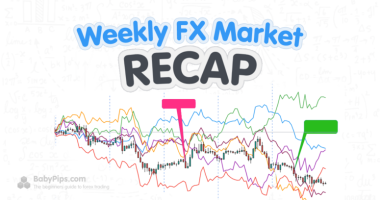Economic data was mixed from the Euro area and global risk sentiment moves were mostly subdued, which likely supports why we saw a relatively quiet, mixed week for the euro.
The Euro


European Headlines and Economic data
Monday:
German Production in December 2020: 0.0% m/m; -1.0% y/y
November 2020 (revised): +1.5% on the previous month (price, seasonally and calendar adjusted)
-2.5% on the same month a year earlier (price and calendar adjusted)
ECB’s Lagarde sees significant economy risk from resurgent virus
“The renewed surge in Covid-19 cases, the mutations in the virus and the strict containment measures are a significant downside risk to euro-area economic activity,” she told European Parliament lawmakers on Monday. “It remains crucial that monetary and fiscal policy continue to work hand in hand. Fiscal policy -– both at the national and at the European level -– remains crucial to bolster the recovery.”
Tuesday:
ECB’s Panetta floats 3,000-euro limit on digital cash
The industrial production index decreased by 0.2% in seasonally adjusted terms from the prior month, compared with the 1.4% monthly decline registered in November.
French economy stabilizes at 5% below pre-pandemic levels “After dipping to 7% below normal during November’s lockdown, the economy improved somewhat in December and is expected to remain steady through February, according to the central bank’s monthly survey of 8,500 companies conducted between Jan. 27 and Feb. 3.”
Wednesday:
In December 2020, French manufacturing output decreased −1.7% vs. +0.7% in November
“In the whole industry, output decreased for the second consecutive month (−0.8%, after −0.7%).”
German Inflation rate at +1.0% y/y in January 2021; +0.8% m/m
“The temporary reduction in the rates of value added tax, which was a measure of the Federal Government’s stimulus package, ended on 31 December 2020. The reduced tax rate only continues to apply to restaurants and catering services. The fact that the higher tax rates since January 2021 have been passed on to the consumers is one reason for the increase in consumer prices.”
“Food prices rose by 2.2%. As a result, the price increase has markedly accelerated (December 2020: +0.5%). Higher prices were recorded in particular for meat and meat products (+3.5%), fruit (+3.2%) and vegetables (+3.1%).”
Europe will need fiscal help into 2022: Lagarde
Thursday:
German Wholesale prices in January 2021: 0.0% y/y +2.1% m/m:
November 2020: business insolvencies down 26.0% from November 2019
“GDP is now forecast to grow by 3.7% in 2021 and 3.9% in 2022 in the EU, and by 3.8% in
both years in the euro area.”
“In the euro area, inflation is forecast to increase from 0.3% in 2020 to 1.4% 2021 before moderating slightly to 1.3% in 2022.”
Friday:
Germany, fearing new coronavirus variants, imposes border checks with Austria and Czech Republic – “This means there will be a ban on transportation — and without exceptions tests must be made before entering Germany — and there is an obligation to quarantine.’
In France, UK variant found in a quarter of new Covid-19 infections – “The health minister also said variants first detected in Brazil and South Africa now accounted for 4% to 5% of all new cases.”
The Swiss Franc


Swiss Headlines and Economic data
The Swiss franc was a bit odd this week as it broke away from its usual recent behavior of trading roughly inline with the euro. And it likely wasn’t the economic updates from Switzerland as the market rose after a weaker-than-expected unemployment update on Monday (Swiss unemployment rate rose from 3.5% in December 2020 to 3.7% in January) and fell after the rise in monthly CPI read on Friday (The Swiss consumer price index (CPI) increased by 0.1% m/m in January 2021).
Broad risk sentiment was also leaning positive, so there was no rush to safe havens this week. Could it have been positive vibes as Swiss cases and deaths were down further this week?








